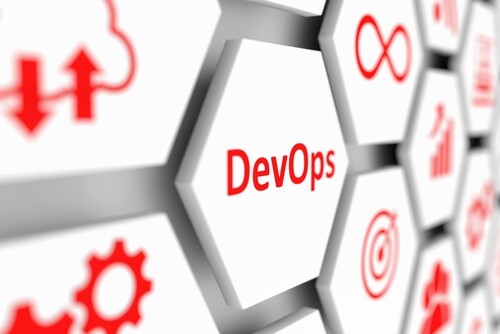In the early days of software development, projects were developed sequentially in a series of steps which was called ?The Waterfall Model.? It was called the waterfall because once you got past a step, you couldn?t climb back up. Here is a typical waterfall model for software development:
- Requirements
- Design
- Implementation
- Verification
- Maintenance
Each step needed to be completed before the next could begin. It took time to develop and changes were difficult to include. When problems were found, developers often had to start all over at the top of the waterfall.
Say Goodbye To The Waterfall
In today?s continuous development cycles, the waterfall method just is not relevant anymore. Thus, the agile methodology was born. It values individuals and interactions over process and tools. It taught developers to break software down into smaller chunks, develop these chunks, and accelerate feedback loops. It provides for quicker design, collaboration, and a faster launch cycle.
DevOps teams have taken this agile concept to heart by merging software development (the Dev part) and IT operations (the Ops part) into a cohesive team to accelerate delivery. It created agile teams that could work together cross-functionally and iterate quickly.
Continuous integration (CI) streamlines the system by using automation to drive products through the system. Each chunk is tested and integrated continuously. This allows for smaller and more frequent updates. Continuous delivery (CD) allows for rapid release software delivery. Tools like Jenkins provide DevOps teams with the ability to automate each stage of the delivery pipeline. It enables a consistent and reliable method to regularly update apps and software.
Using these methods, agile methodologies have been extended across development, integration, testing, and delivery cycles. While agile methods provide the underpinning for DevOps teams, the collaboration of development and operations teams, coupled with CI and CD, greatly enhances the efficiency of the operation.
- Faster time to market
- Ability to build and evolve products
- Improved efficiency
- Reliable releases and deliver
- Improved quality product
- Improve customer satisfaction
DevOps Builds On Agile Methodologies
You will find many similarities between the traditional agile model and how DevOps teams work together. DevOps is holistic and collaborative with continual feedback loops. Automated systems like JFrog Artifactory and Go Registries allow for rapid builds, tests, releases, monitoring, and revisions.
However, there are differences as well. Agile focuses on the development phase and tends to ignore the operations phase. DevOps provides end-to-end operations from development through delivery. It treats the code no differently whether it is in the development phase, QA, or on a production server. DevOps tends to embrace a more inclusive and wider culture.
DevSecOps teams use the same techniques to remove silos in organizations by folding in other functional areas that play a role. One area that?s emerging is folding in security. So-called DevSecOps teams function as a unit and drive security functions throughout the end-to-end process as part of the culture.
Conclusion
Building on agile methods, the DevOps model breaks down barriers between functional units so that development and operations can work collaboratively across the entire product life cycle. It smooths out hand-off friction and creates operational efficiency. This accelerates delivery and innovation.

